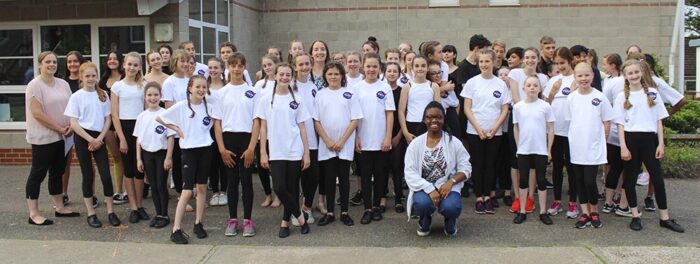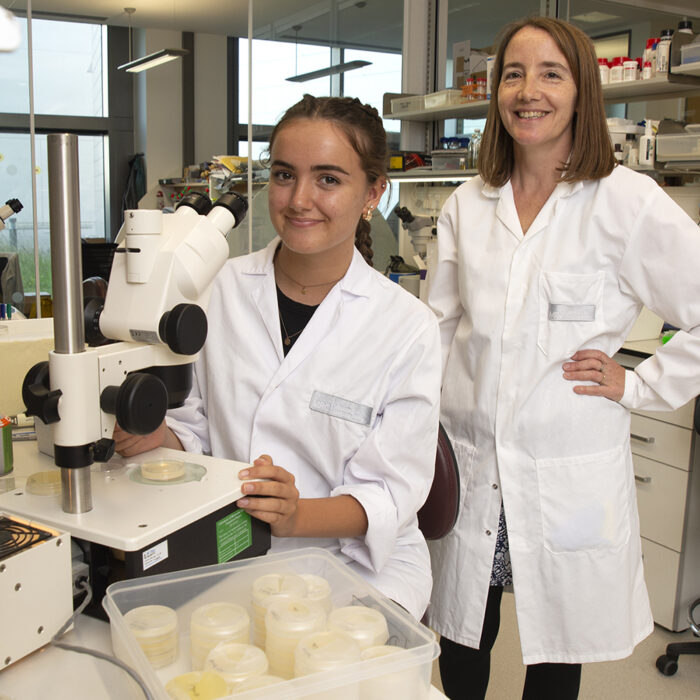Inspiring students to think about science in a different way through dance

Dance, music, art and science came together for one evening in July 2019, at the King Edward VI School in Bury St Edmunds. The evening was a feast of all things science, with scientific installations and stage performances, all executed by the school students. Each staged piece was based on a different area of scientific research. One piece was inspired by the work of Denise Walker, a researcher in William Schafer’s group in the LMB’s Neurobiology Division.
Denise was invited to give a talk about her work to students ranging in age from 11 to 17 years old a month ahead of the performance evening. The aim of Denise’s work is to gain a better understanding of the mechanisms by which nervous systems process information and generate behaviour and involves research with C. elegans nematode worms. After her talk, Denise commented, “I was really impressed at how engaged and motivated the students were!”. While wanting to choreograph an artistic performance, the students were also keen to accurately depict nematode worm behaviour and their use in research, so had asked plenty of questions, and subsequently did plenty of additional research, in order to get the details right.
GCSE and A-Level students from Years 10 and 12 then collaborated to produce a dance performance related to Denise’s research, with Dance students choreographing, Music students composing the accompanying music, and Science students adding scientific explanations to the performance.
Their choreography showed worm behaviour, especially the sinusoidal movement, along with an interpretation of neuronal firing and the passage of information from one neuron to another. The students also demonstrated the use of C. elegans worms in studying learning, memory, and dementia, through the use of a repeated dance sequence that gradually became “forgotten”. Fluorescent green paint was also used to help show the beauty of the fluorescent microscopy images that researchers produce of nematode worms.
Denise commented, “I loved being part of this project. As a STEM Ambassador, I’m really passionate about finding creative ways to enthuse the next generation of scientists, and collaborations between the arts and sciences are a really powerful way to reach new audiences.”

One Year 12 student, Shannon, was so inspired by Denise’s talk that she wanted to spend a couple of days in the lab with Denise to see the research first-hand and get an experience of what it’s like to work as a scientist: “Although never really considering neuroscience as a subject, seeing Denise’s passion and dedication made me want to know more about it; at which point I was lucky enough to receive two days of work experience in the lab!”
After her visit to the LMB, Shannon commented, “I study English Literature, Psychology, Business and Dance for A-Level, so not exactly the standard ‘Chemistry, Physics, Maths, Biology’ subjects. However, I think that this experience has really aided my decision on what I want to do in later life (there are endless choices) as I have always been torn. In respect to a Psychology degree and which road of specialisation, following these two days I am now considering a neuroscience path as these researchers have made me want to know more and have really helped me have a taste into the real life situation.”